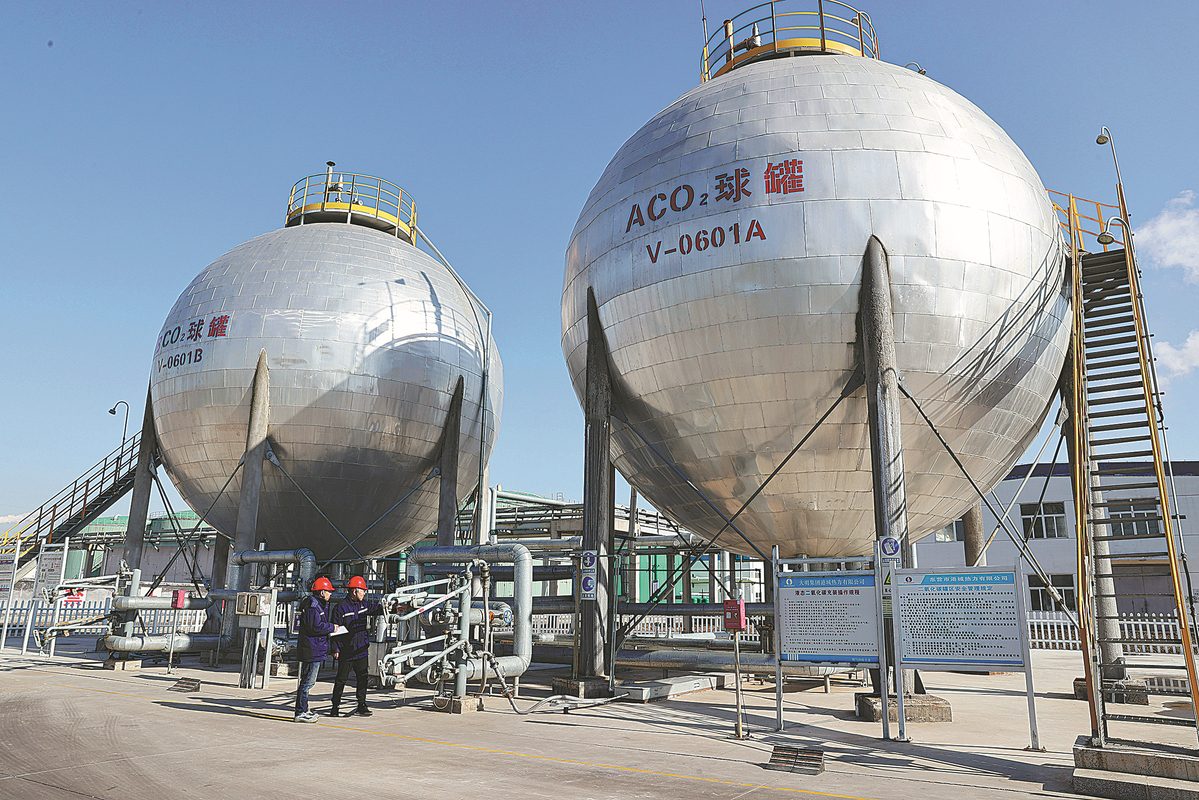Green goals require all hands on deck


Top 3 oil giants tap carbon high-tech for less emissions, larger output
China's ambitious goal of reaching carbon neutrality by 2060 means the country is set to achieve net-zero emissions in less than 40 years.
In addition to shifting toward cleaner energy sources, including solar and wind power, China has also been working on carbon capture, which makes the technology of carbon capture, utilization and storage (CCUS) an essential part of the nation's green solutions.
Energy players at home and abroad have been expanding their presence to tap the potential of the CCUS sector-a set of methods and technologies for removing carbon dioxide from flue gas and the atmosphere, recycling it for use, and establishing safe and long-term storage modalities.
China's three biggest oil companies-China National Petroleum Corp, China Petrochemical Corp and China National Offshore Oil Corp-have all been actively laying out plans to develop CCUS, which will not only further facilitate the country's goal to achieve carbon peak and carbon neutrality, but also help boost their domestic oil output.
CNOOC recently announced it will cooperate with Shell plc and ExxonMobil to develop a carbon capture and storage (CCS) hub in Huizhou, Guangdong province. This will be China's first offshore large-scale CCS hub capable of capturing up to 10 million metric tons of carbon dioxide per year. It will significantly help reduce CO2 emissions from the area and serve the decarbonization needs of nearby enterprises, it said.
In addition to CNOOC, China Petroleum and Chemical Corp, or Sinopec, the world's largest refiner by volume, has also been stepping up large-scale development of CCUS.
The company initiated China's first megaton CCUS project last year-Sinopec Qilu-Shengli oilfield CCUS-which is expected to become China's largest whole industrial chain CCUS demonstration base and application case for promoting large-scale development of CCUS in the country.
Expected to be put into operation this year, the scheme involves sending CO2 captured at a petrochemical refinery to the Shengli oilfield, where it will be reinjected as part of the field's enhanced oil recovery program.
When completed by the end of this year, the project in East China's Shandong province will be able to cut CO2 emissions by 1 million tons per annum, it said.
Sinopec President Ma Yongsheng said developing CCUS technology represents an irresistible trend in the battle to reduce emissions, and for oil companies, reinjecting carbon dioxide from petrochemical refineries into oil wells to enhance oil recovery is also a promising way to convert trash into treasure.
According to a report released by Reportlinker.com called "Carbon Capture, Utilization And Storage Global Market Report 2022" in June, the global CCUS market is expected to grow from $1.62 billion in 2021 to $1.91 billion in 2022 at a compound annual growth rate of 17.6 percent.
With an increasing number of major companies and governments investing in CCUS to reduce carbon emissions, the global market is expected to grow to $3.62 billion in 2026 at a compound annual growth rate of 17.4 percent, it said.




































